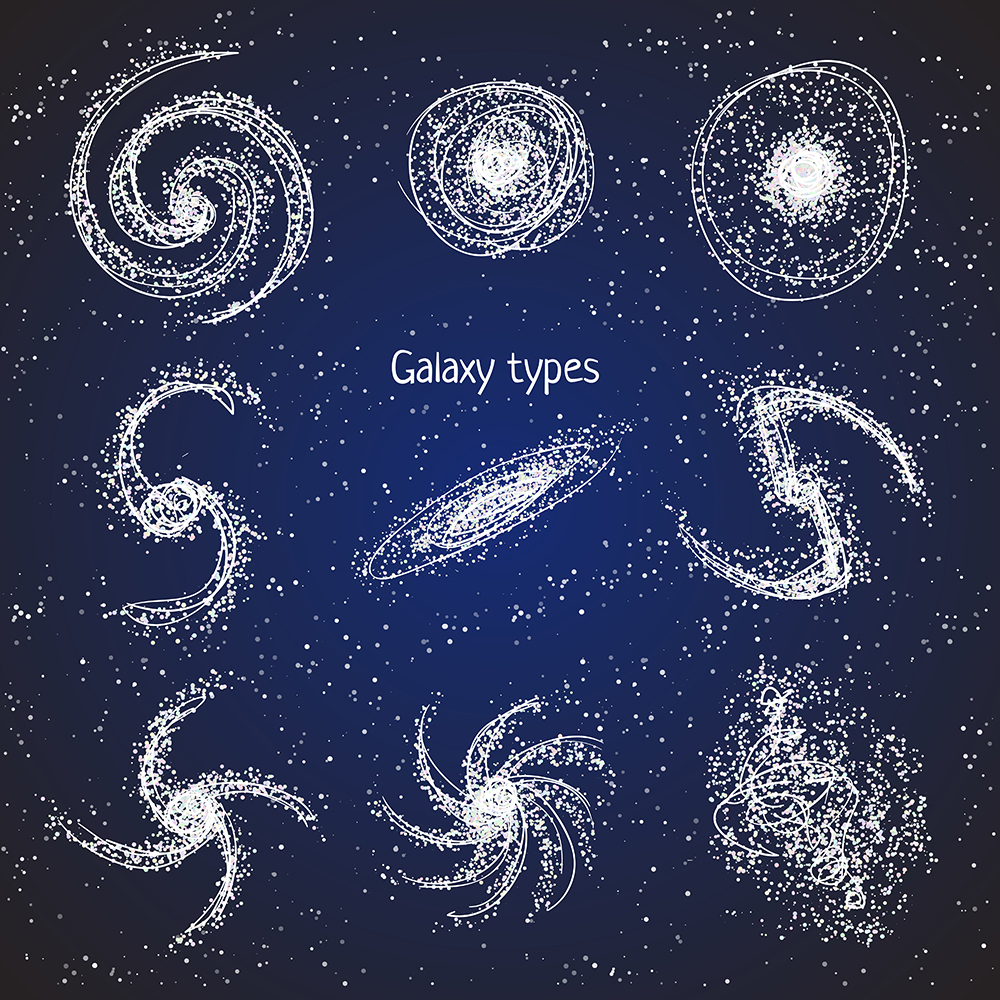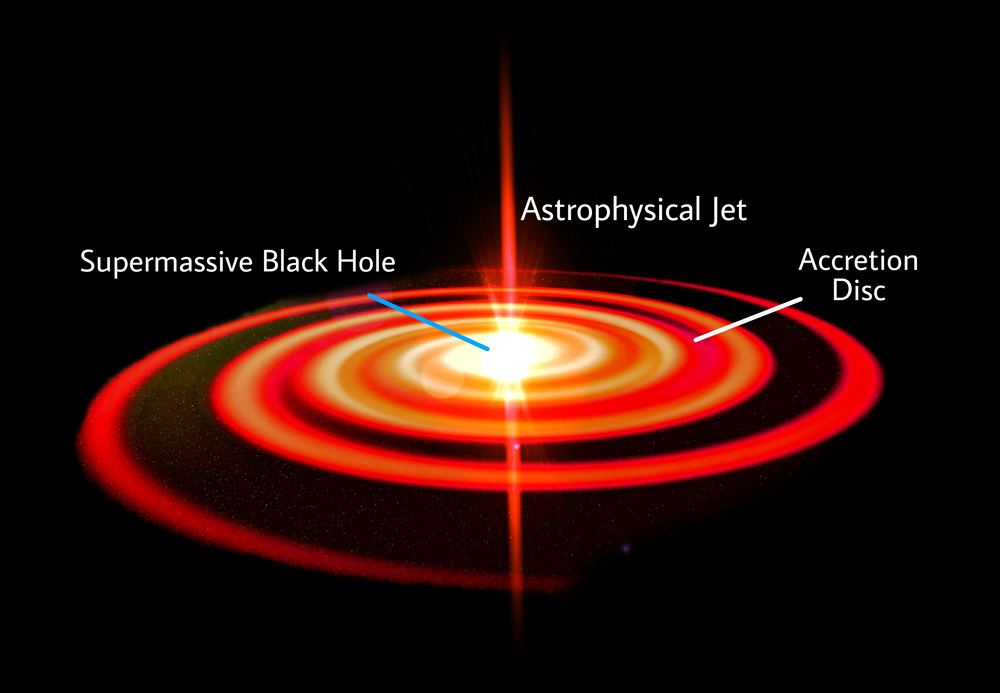The birth of stars are influenced by multiple factors, with one of the major ones involving a black hole residing in the center of the host galaxy.
Imagine the universe as a giant puzzle, with galaxies and stars as its pieces. The puzzle not only contains pieces of galaxies and stars, but also objects like quasars, black holes and many such weird-sounding distant objects! One of the most mysterious objects in the Universe, black holes, are studied by taking observations of stars that revolve around them.
But what would happen if there were no stars present in a galaxy? It’s extremely challenging to study the light traveling from distant objects in the Universe, but scientists study nearby stars in our Galaxy and acquire information about how the Galaxy has evolved over long periods of time.
Types Of Galaxies
Galaxies vary from each other in many ways. There are multiple means through which one can distinguish galaxies from each other, such as gas content, age of the stellar population, and many more. One of the key factors involved in this distinction is the rate at which new stars are formed within a galaxy. Some galaxies (spiral galaxies) show a faster star formation rate than other types (Elliptical galaxies).
Eventually, star formation is inhibited as the galaxy evolves. Due to this, the stellar population in that particular galaxy will include a higher number of older stars than younger ones. The question remains, what factors could possibly lead to the cessation of star formation?
Astronomers believe that supermassive black holes lie at the center of every galaxy. Even our Milky Way has a giant black hole residing at the center, called Sagittarius A*. A recent study emerged that theorizes the possibility of star formation being influenced by the supermassive black hole at the galactic center. This insanely dense black hole, with a mass of more than millions of times (even billions – in the case of supermassive black holes) our Sun, has shown gravitational effects on not only nearby stars, but the surrounding gas as well.
The relationship between supermassive black holes and star formation seems counterintuitive. It can sometimes not hinder the birth of stars, but actually push star formation. How can we figure out which case happens when?

Also Read: Do Stars Form Only In Galaxies Or Outside Them Too?
How Can Supermassive Black Holes Prevent Star Formation?
When gas falls onto a supermassive black hole, it does not fall straight inside the black hole. It follows a concentric circular path due to the presence of angular momentum. This leads to the formation of an accretion disk consisting of dust particles, gas and matter.
The matter in this accretion disk is exceedingly hot and can easily reach extreme temperatures. The hotter an object is, the higher the amount of energy that is radiated from it in the form of winds. These winds flow at high speeds, scattering surrounding matter particles and even certain objects – including stars!
Various classes of black holes have an accretion disk surrounding them. Some of the most prominent disks are found in active galaxies powered by an energetic Active Galactic Nuclei (AGN).
Supermassive black holes power this central engine – AGN. The galaxies that have AGN are called active galaxies, and these galaxies can potentially remove the necessary gas and dust required to initiate star formation. Studies in different wavelengths enable scientists to understand the specific behaviors of each class of AGN.
Also Read: Did Black Holes Form Before Stars Did?
How Can Relativistic Jets Of A Supermassive Black Hole Induce Star Formation?
Certain AGNs also have relativistic radio jets emitting from them. These jets are generally formed when the black hole is spinning along with the accretion disk around it. Galaxies with these radio jets emitting from the AGN are called radio-loud AGN, whereas no relativistic jet classifies it as a radio-quiet AGN.
Investigation of the interplay between supermassive black holes and their host galaxies have also revealed information about star formation being induced by the jet outflows. It was noted that jets that are considerably more compact than the other types not only disrupt the distribution of gas and heat it up, but also accelerate star formation in a strange manner. A more thorough analysis of a sample of radio-quiet galaxies will help scientists understand the impact of compact jets on star formation.
By estimating the rates of star formation in different types of galaxies, one can better recognize the effects of both low- and high-radiation winds on stars and the gas surrounding these stars.

Also Read: Are Astrophysical Jets The Fastest Jets In The Universe?
Summing Up
In space, supermassive black holes and star formation are linked in a fascinating way. These big black holes don’t simply destroy things; they also help make new stars and shape their journey. With improved technology and our growing knowledge, scientists, physicists and astrophysicists are gradually figuring out how this collaboration between black holes and stars actually happens. Every time someone learns something new, we’re getting a better idea of how everything in space fits together.
Also Read: How Many Black Holes Are There In The Universe? How Do We Estimate This Number?
With every revelation, the path to understanding the complex evolution of galaxies becomes easier and astronomers move one step closer to unravelling the cosmos. Thus, black holes, despite being a destroyer, also play a significant role in enhancing or accelerating the birth of stars. A harmonious balance is maintained by laws yet unknown to mankind. One can only hope that these mysteries don’t remain hidden forever.
How well do you understand the article above!

References (click to expand)
- CM Harrison. (2017) Impact of supermassive black hole growth on star formation.
- Supermassive black holes control star formation in large ....
- Blandford, R., Meier, D., & Readhead, A. (2019, August 18). Relativistic Jets from Active Galactic Nuclei. Annual Review of Astronomy and Astrophysics. Annual Reviews.
